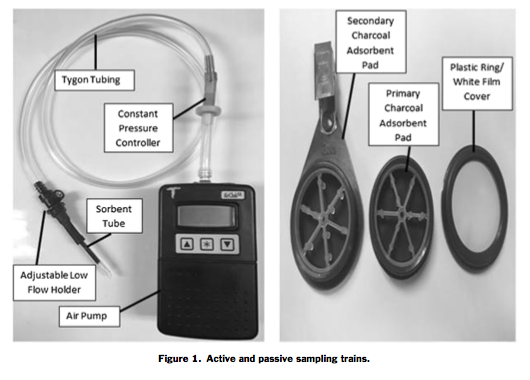The Editor’s Spotlight for the November / December 2017 issue of the Journal of Chemical Health and Safety is shining on:
A comparison study between passive and active workplace personal air monitoring techniques for airborne isopropyl alcohol concentrations
by
Austin K.Simons, Rodney G.Handy, Darrah K.Sleeth, Leon F.Pahler and Matthew S.Thiese
The abridged abstract is:
This research project involved a comparison between the performance of active and passive sampling methods used to collect isopropyl alcohol vapor in an industrial setting. This field experiment was conducted in a real-world industry setting with workers exposed to isopropyl alcohol. Based on the strong correlation values and the trend of passive samplers reporting higher results than the active samplers, occupational health specialists could reliably use the passive samplers in this study to demonstrate compliance to isopropyl alcohol exposure limits.
This article and the rest of the issue can be found at
http://www.sciencedirect.com/journal/journal-of-chemical-health-and-safety/vol/24/issue/6
Also included in this issue of JCHAS are:
Editorial: What a year!
Harry J. Elston
Safety and ethics in ACS and major scientific and engineering societies: A gap analysis
Daniel R. Kuespert
Response letter from CEPA to “Safety and Ethics in ACS and Major Scientific and Engineering Societies: A Gap Analysis”
The ACS Committee on Economic and Professional Affairs
Safety and health risk perceptions: A cross-sectional study of New Jersey hair and nail salon clients
Lindsey J. Milich, Derek G. Shendell, Judith M. Graber
UN-GHS — Physical hazard classifications of chemicals: A critical review of combinations of hazard classes
Cordula Wilrich, Elisabeth Brandes, Heike Michael-Schulz, Volkmar Schröder, Klaus-Dieter Wehrstedt
A comparison of occupational exposure limits and their relationship to reactive oxide species
Original research article
Tracy Zontek, Burton R. Ogle, Scott Hollenbeck, John T. Jankovic

